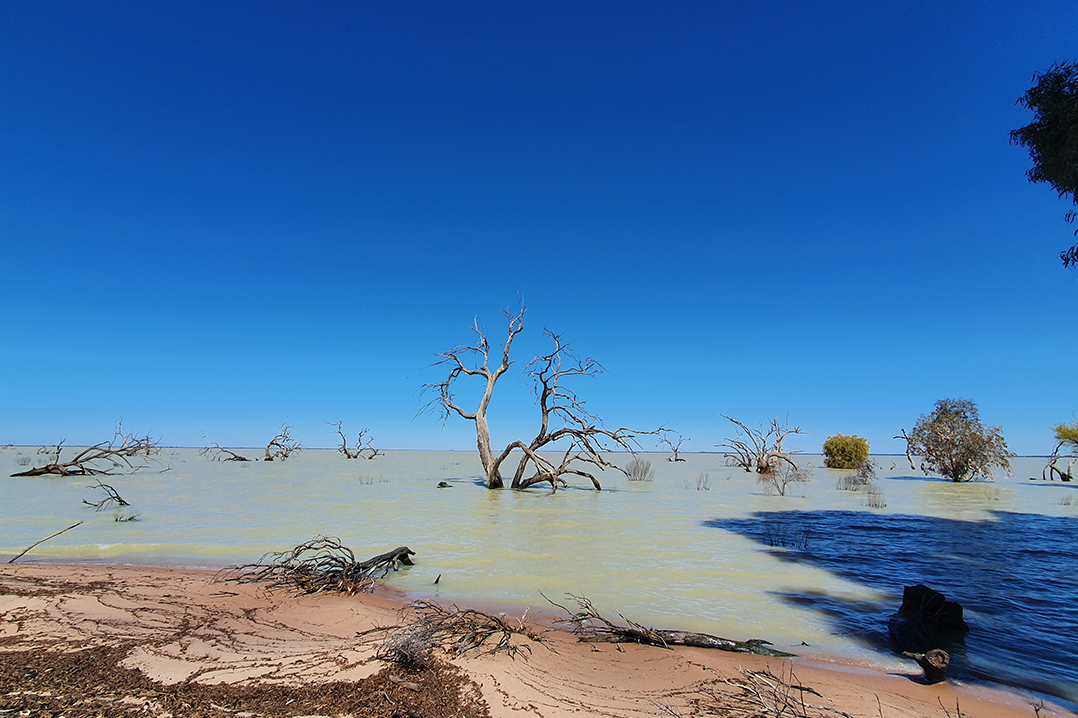A clear path for a better state of water
Regardless of climate change or the ebbs and flows of industry demand, communities and water users look to water laws to ensure fair access to water for all.
Water security and regulating access to it continues to be one of our state’s biggest challenges. NSW’s record-breaking drought (2017-20) and recent floods have seen fluctuating extremes in water take and availability. The cost of these natural events to the environment and water users is only just surfacing, while the $29 billion value of water entitlements continues to rise.
The latest State of the Environment Report calls for improved monitoring and reporting of water activities to protect the health of our rivers and catchments and the survival of our native fish populations. Unlawful environmental activities are on the government agenda, but for the state’s independent water watchdog, the Natural Resources Access Regulator (NRAR), they always have been.
NRAR has been on a four year-long journey to restore public confidence in a complex water licencing system that many have taken advantage of in the past. A record number of inspections by NRAR officers in the last year has resulted in increased action against unlawful water use but has also seen an increase in voluntary compliance by the regulated community.
With over 36,000 water access licences in NSW and a fertile $2-3.5 billion irrigated agriculture industry tapping into around 60% of the state’s water take, NRAR oversees water resources with an eagle eye. Although the majority of water users do the right thing, a small percentage have the potential to cause significant harm, and that’s where the regulator focuses its attention.
NRAR is putting on notice specific water use types and sectors we will be targeting over the next year, so water users can ensure their activities are compliant before NRAR officers follow-up with spatial monitoring, site inspections and investigations. There will be clear consequences for those who continue to break the law. It’s what the public demand and the environment needs. It also ensures fair water use, particularly for those who comply with the rules.
Priorities for the water regulator this year are:
- compliant metering, so that water take is measured accurately and accountably,
- lawful water use for irrigated agriculture, and
- collaborating with the mining industry to develop a standardised reporting framework to ensure water take is accurately measured, modelled, and accounted for.
It is important that the water regulator gives clear and transparent indications to the regulated community about its intended activities and the reasons for this focus. Clear communication with the community ensures they are aware of what we expect and have no excuse for non-compliance. We will of course continue to use education and engagement in concert with enforcement to assist the community to understand their obligations.
NRAR is a small and agile environmental law enforcement organisation. We update our policies and strategy every year to respond to new and emerging issues in the ever-evolving water world. We report frequently and transparently on our routine monitoring and compliance auditing. We take swift action to protect the state’s fragile groundwater and river systems from over-extraction.
Whether water is plentiful or scarce, NRAR will always be there to provide certainty and security to the future state of our most precious community owned natural resource.
Attributable to: The Hon Craig Knowles AM, Chair NRAR Board
About Craig Knowles: Craig is the Chair of NRAR’s Board. His previous statutory appointments include a four-year spell as chair of the Murray-Darling Basin Authority (MDBA) from 2011-2015. In that role, he represented Australia at the 2014 United Nations General Assembly Forum on Water and Energy as part of the UN mission to develop Sustainable Development Goals in the context of climate change.
